Poetry is critical to a complete understanding of the First World War because in the years leading up to and including the war, poetry played a central role in public and private life.
Constance Ruzich, in the introduction to the anthology.
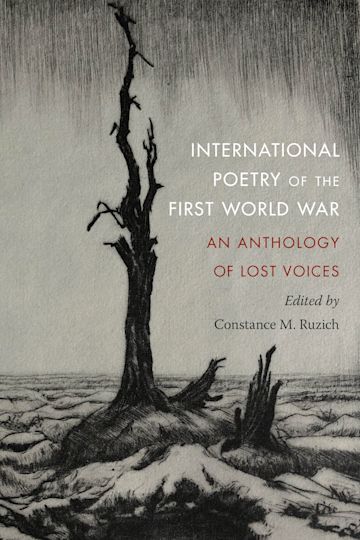
It was Paul Fussell who showed us that the young British officer class that went off to the Great War was steeped in the classics, the King James Bible, Pilgrims Progress with the Oxford Book of English Verse in their knapsacks. Future prime minister Harold Macmillan – wounded at Delville Wood on the Somme in 1916 – lay for a day in a shell-hole in No Man’s Land:
“I had in my pocket Aeschylus’s Prometheus in Greek.
It was a play knew very well, and seemed not inappropriate to my position …I read it intermittently.” *
But poetry was not the precious preserve of the officer class. In that era, poetry reading and writing poetry were everywhere and for, and by, everyone. This is a point that Connie Ruzich makes in her fascinating introduction to her quite wonderful International Poetry of the First World War.
When war broke out people responded with poetry. She notes as example, that the London Times received over a hundred poems a day during the month of August 1914 and the deluge continued throughout the war.
It may seem odd to use the words ‘delight’ and ‘delightful’ for an anthology of war poetry. The delight comes from the richness and variety of the material and the fresh approach to a familiar topic. Ruzich has selected some 150 poems from a very broad spectrum, placing each in a personal and historical context. Not only do we have the poems that surprise us but also the associations and the personal and social context. The result is a volume dense with unexpected detail and rich with connections.
The poems themselves range from the harrowing to the lighthearted, from the patriotically jingoistic to the deeply personal and painful.
Some of the poems are by writers more familiar in other contexts. Erich Kästner for example, author of Emil and the Detectives – perhaps my favorite book from childhood. Here he is in 1930 speculating satirically on what if Germany had won.
If we had won the war, I bet
that heaven would be national
the clergy would wear epaulets,
God be a German general
The Other Possibility (Die Andere Möglichkeit)
Ruzich provides the context of the effect of the war on Germany and on Kästner who had served as an artillery gunner and become a pacifist who watched the rise of the Nazis with mounting dismay.
Other represented poets are less well known and Ruzich finds ways to connect their work thematically with those more familiar. Hardwicke Drummond Rawnsley for example, best remembered today as one of the founders of the National Trust, shared the same deep love for the countryside as Edward Thomas. In Going to the Front he wrote:
I had no heart to march for war
When trees were bare and fell the snow;
To go to-day is easier far
When pink and white the orchards blow,
While cuckoo calls and from the lilac bush
Carols at peace the well-contented thrush.
….
For hawthorn wreath, for bluebell glade,
For miles of buttercup that shine,
For song of birds in sun and shade
That fortify this soul of mine,
For all May joy beneath an English sky,
How sweet to live—how glad and good to die!
While there are some familiar names in the anthology it is also a celebration of humble lives, of ordinary people, caught up in the drama of world events. It’s about those who served as well as those who grieved, objected, worked, waited and worried. “Knit two and purl one”, “I sit and sew”. There are poems with grand thoughts and verses that are as down-to-earth as this anonymous homage to a “Salvation Army lass” who “battles for the Lord” baking pies at the front:
“‘Home is where the heart is’ –
Thus the poet sang;
But ‘home is where the pie is’
For the doughboy gang.”
There is a wonderful parody of W.B.Yeats
“I will arise and go now, and go to Picardy”
And the Bruce Bairnfather cartoon irreverence of limericks and rhymes:
“Jack and Bill they stuck it till
Their knees were under water.
Jack fell down and said to Bill
Some words he didn’t oughter.”
I love the way Ruzich weaves in connections with more canonical poets as well as with the historical and social context. Alfred Lichtenstein was a Prussian Jew whose ironic “Prayer Before Battle” (Gebet vor der Schlacht) brings Sassoon to mind although he wrote it well before Sassoon’s bitter satires of the later years of the war.
“The troops are singing fervently, each for himself:
God, protect me from misfortune,
….
That I don’t die like a dog
For the dear fatherland”
(This had me thinking of John Betjeman and his lady at prayer in another war In Westminster Abbey
”Think of what our Nation stands for,
Books from Boots’ and country lanes,
Free speech, free passes, class distinction,
Democracy and proper drains.
Lord, put beneath Thy special care
One-eighty-nine Cadogan Square.”
Lichtenstein was shot in the stomach in action near the Somme and died in September 1914. Almost thirty years later, his mother and two of his siblings were killed by the Nazis.
The anthology is organized around thematically and it can be read that way. But dip in at any point and become immersed in a poem and commentary that will enrich your understanding of that war however much you thought you knew.
The poem Camouflage connects the military tactic of disguise with the soldier’s practice of shielding those at home about the truth of the war. Tipperary gives us the history of the song and how it became ubiquitous. There are poems and stories that connect us with the lived experience of the time – the gramophone, shell shock, race riots and racial prejudice, the mud, the marching, the digging, knitting, nursing, picnic, comradeship, desolation, madness and mundane simple pleasures.
“We were eating chip potatoes with our fingers, like a tramp,
And the unseen owls were hooting in the trees around the camp;
We were happy to be hungry, glad to be alive and strong;
So – to-morow might be terror, but tonight could be a song!”
– William Kersley Holmes
Ruzich of course is the creator of the extraordinary blog Behind Their Lines Poetry of the Great and her posts form the substance of the book. She started the blog at the end of 2014 and I think I have been following since about that time.
This means that some contents of the book are familiar to me but there is something about their existing in the material reality of book form that lends a greater pleasure. I’ve been leafing through it and stopping in random places and it feels quite different than scrolling through posts. The eye catches things in different ways and gathered together in book form it is easier to see the whole and the extent of her achievement.
The associations, connections, anecdotes, and biographical details build a momentum. It all makes for an incomparable window into another time. Ruzich has done an extraordinary service here and created a volume that should sit beside any anthology of war poetry as well as beside any social and cultural account of those years.
I wrote in a Tweet:
Just re-read the introduction. Brilliant setting of the cultural context and rationale for the choices and organization. Such a powerfully moving anthology. Scholarly, erudite, but so very readable. Packed with fascinating anecdotes and odd details. The antithesis of stuffy.
Ruzich responded with:

Clearly, she succeeded in realizing that vision.
I do have one quibble though. One of her poems is A Letter from the Front by Henry Newbolt in which the poet tells of a scene of “A domestic cat, soberly marching behind” a young officer out hunting. In the commentary, Ruzich mentions that cats were frequently found in the trenches and welcomed by soldiers as mascots, gas detectors, companions, and rat catchers. She repeats a statistic from Mark Strauss: “An estimated 500,000 cats were sent to the trenches of the First World War.”
I quite believe there were many cats in the trenches. Possibly even half a million of them. But can half a million have been dispatched? From where? By whom? Was there a great cat round-up?
And all this reminds me of the flying cats of Borneo story from 2007. The one about the 14,000 cats parachuted to kill the rats proliferating because of the misuse of DDT. I tracked that story down and the number was actually twenty-plus cats along with four cartons of stout!
But there were cats, that is for sure.
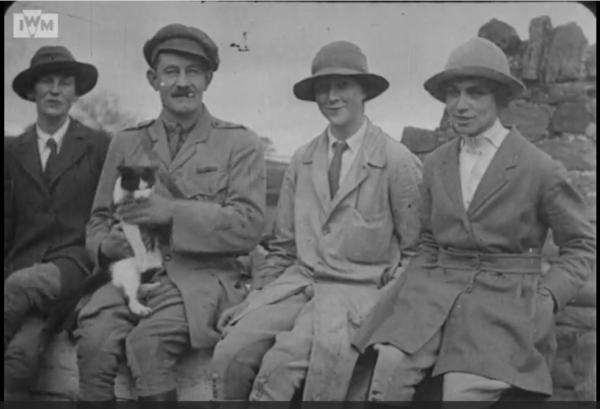
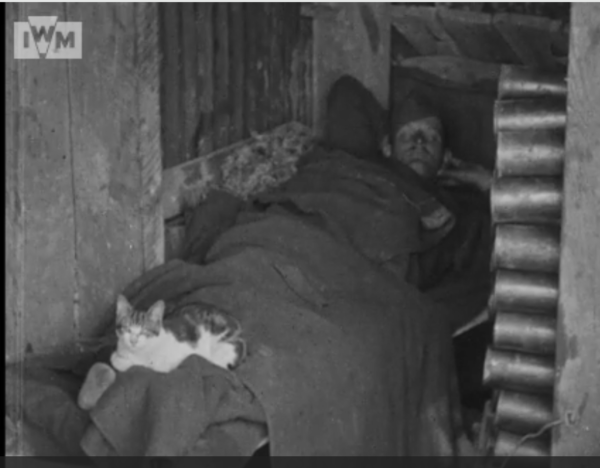
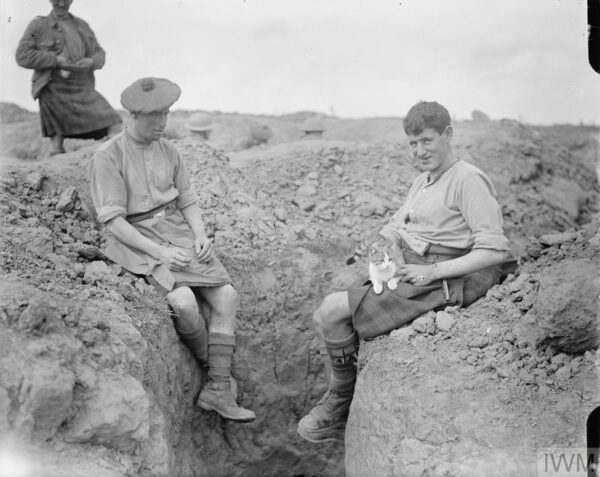
OK – enough petty silliness. Ruzich’s hours of scholarly research have resulted in an anthology that makes a tremendous contribution to our understanding of the Great War. And I am grateful for that. Thank-you.
* On the day that Harold Macmillan lay wounded in a shell-hole, his fellow Guards officer – Raymond Asquith – the son of the then prime minister, Herbert Asquith was killed nearby. It was the 15th of September – the day tanks were used in battle for the first time. Ruzich includes an eerie description of the wasteland of the battlefield that includes a description of tanks on the move. It’s by Mary Borden, serving at a French field hospital at the Somme She described those tanks:
Against the sunset, along the sharp edge of a hill, a strange regiment was moving in single file, a regiment of monsters.
They moved slowly along on their stomachs,
Dragging themselves forward by their ears,
Their great encircling ears moved round and round like wheels.
They were big and very heavy and heavily armoured.
Obscene crabs, armoured toads, big as houses.
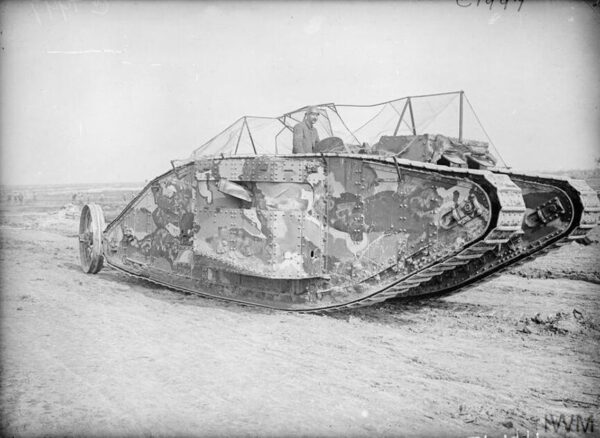
The featured image is from Percy Delf Smith’s “The Diggers” Twelve Drypoints of the War 1914-1918
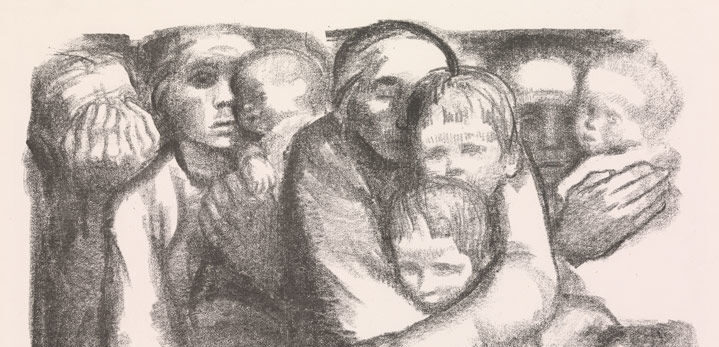
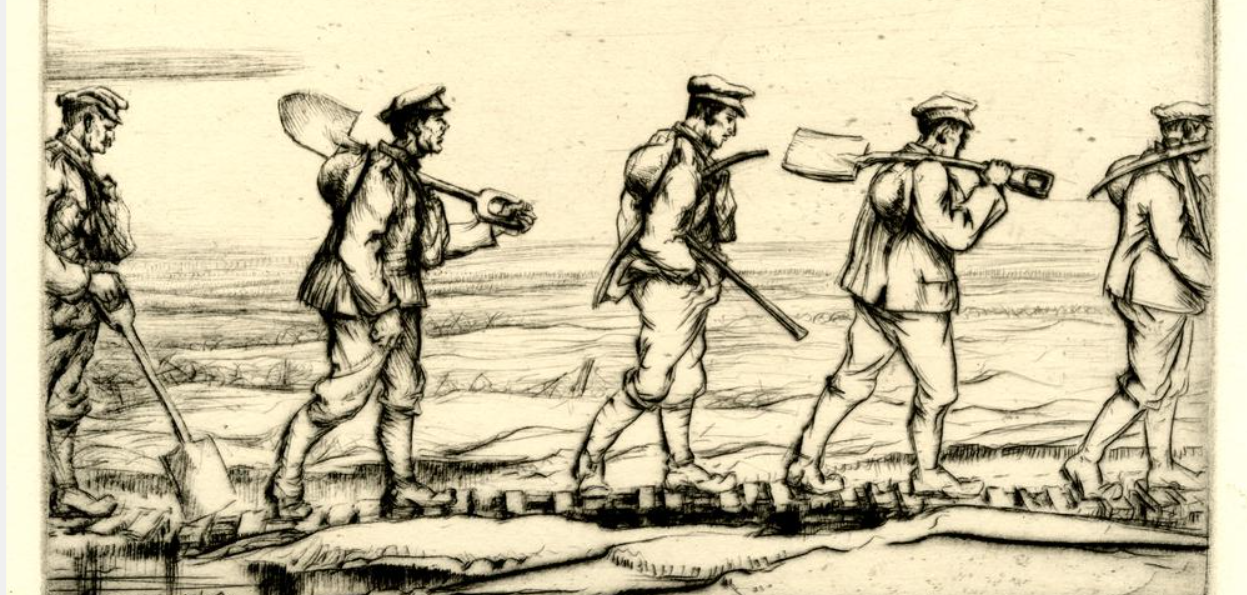


This one is so terribly tempting and looks like a perfect companion to keep alongside Paul Fussell’s own ‘The Great War and Modern Memory’.
As Fussell is one of my very favorite books I would say this is an ideal companion.
Fascinating – excellent, informative, thoughtful.
I’ve run out of adjectives. Really enjoyed.
Many years ago when I was teaching the War poets I had a student who had just come home from Viet Nam. He quietly slipped out and later returned to tell me that the words had really connected with him. I told him there was no need to have a class discussion with him present. The other students would never understand.
That’s the kind of thing good teachers do.
Like (the ‘regular’ Like wouldn’t take)
I have ordered a copy. Like you, I prefer to hold a book in my hands, particularly one as deeply meaningful and important as this. Thank you for writing about it.
It’s an absolutely wonderful book.
If you enjoy it as much as I did you are in for a real treat.